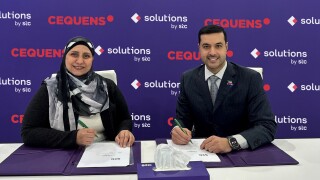
Francesco Votta, senior product manager for 5G roaming enablement at Deutsche Telekom Global Carrier, talks to Capacity about roaming advances in IoT made possible by 5G technology, including the benefits and challenges of low-latency roaming.
Why is 5G such a transformative force for roaming in the telecoms industry?
5G standalone [SA] technology is bringing significant changes to roaming because it is designed in all its aspects to connect everything to everything, anywhere and at any time. 5G is also the first technology that facilitates end-to-end security from day one because it features security controls that are already ‘built in’. In short, the new 5G SA specifications are going to redesign the way in which roaming works today.
Of course, 5G means different things to operators depending on their core activities. Those focused on consumers mostly see the new ‘G’, while operators focused on enterprises tend to primarily appreciate its campus-network or network-slicing potential, and operators with a focus on IoT increasingly require low latency. However, one thing that all operators have in common is the need for roaming support to ensure service consistency for their customers.
This overall need has spurred our industry into action. GSMA workstreams are currently engaged in defining the future of 5G SA roaming in more detail, while innovators are testing how to address new market demands.
We at Deutsche Telekom Global Carrier want to provide leadership during this industry transformation by offering an innovative roaming environment to test the transition to 5G. This supports early movers who want to trial and scout their roaming needs in any 5G implementation scenario regardless of their focus.
As part of our environment, we offer four different proof-of-concept [PoC] trials, in the areas of 5G signalling and security, value-added services for 5G roaming, network slicing for roaming, and regional and local breakout. With the first three roaming trials already well under way, our most recent focus is on IoT roaming for 5G.
What trends are we likely to see in IoT roaming with the development of 5G?
Demand for IoT services has accelerated during the 4G/LTE era, and with it the take-up of IoT roaming services. In some markets, the proportion of IoT connections that are roaming outbound from the home operator reaches over 70% of registered connections, according to a recent survey by Kaleido Intelligence. This trend is expected to accelerate with the growth of 5G.
The survey also found that while IoT devices will account for only 4.4% of 5G connections by 2026, this will be equivalent to 8.2% of active 5G roamers. In other words, IoT roaming is going to become much more than silent roaming as the new generation of mobile technology develops.
5G is especially suited for mission-critical IoT applications, due to the considerable improvements it enables in bandwidth, latency, reliability and security. Transportation and healthcare are expected to be key use cases that benefit from low-latency roaming services. But while IoT roaming based on 5G brings new opportunities, there are also challenges for connectivity providers to meet the needs of their various clients.
Rollouts of local breakout architecture for roaming use cases have thus far worked only with limited success. Operators still do not fully trust one another when it comes to such deployments, with loss of management over roaming policy, loss of visibility over roaming costs and issues with lawful intercept among operators’ chief concerns. Regional breakout architecture mitigates some of these concerns, but more work needs to be done to advance low-latency roaming – which is why we offer partners our low-latency proof-of-concept environment.
What work is Deutsche Telekom doing to advance low-latency roaming?
We believe that joint testing to see how flexibility in transport and low-latency roaming can come together is the only way forward. We have therefore been very active in testing low-latency roaming, and recently announced a cooperation with Orange, Telefónica, Vodafone and deep-tech company MATSUKO in this area.
As part of the collaboration, we jointly conducted a pilot to make holographic calls as easy as making a regular phone call. One of the outcomes was a successful PoC trial implementation of a low-latency data roaming connection between Germany and Spain.
Our successful cooperation is a fundamental pillar for enabling the future of high-quality data roaming. With this PoC, we were already able to show how latency can be reduced by 48% while increasing bandwidth by 250%. In addition, we already offer regional breakout solutions on 4G, with locations set up across the globe.
How else are you aiming to boost latency for roaming in the age of 5G?
Now, we are advancing low-latency roaming even further. 5G has the unique chance to enable easier service integration and functionality exposure thanks to its modular architecture. While implementing a regional breakout solution over 4G always required an integration project between the visited and home network, now we can do this modularly, and offer regional breakout in a totally transparent way to the visited network and with minimum impact to the home operator.
With our PoC environment, we want to address operators’ needs for latency-critical applications with minimal investment by enabling them to expand their core network to different locations and thus allowing regional breakout in a different country or continent with minimal effort. We are currently finalising this environment and already welcome operators to join us today.
What goals are you pursuing with your PoC environments?
We pursue multiple objectives with our PoC initiatives: first, we encourage active partnerships that allow the industry to jointly learn and master this technology transformation; second, our PoCs offer operators the opportunity to test their hypotheses in advance before making strategic decisions; and third, the learnings from the PoC environments pave the way towards the necessary mindset transformation that will see 5G SA potentially enable a whole new world of telco service offerings.
Our ultimate aim is to lend momentum to the industry so that it moves from passive collaboration to active cooperation in service delivery. We believe that is the road to success.








